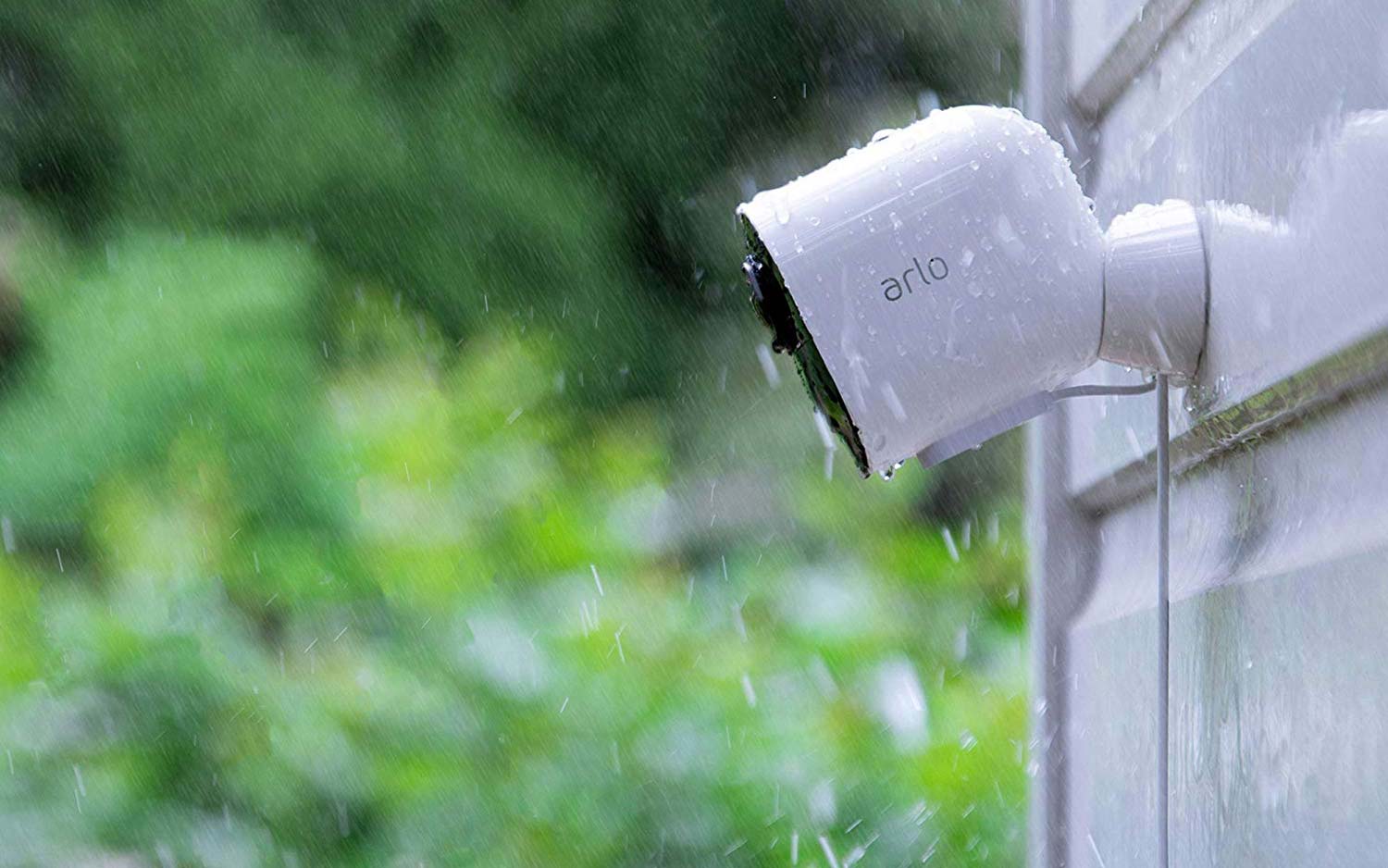Tom's Guide Verdict
Get the Arlo Ultra if you want the best fully wireless security camera. However, you may want to check out the Arlo Pro 2 if you're looking for something less expensive.
Pros
- +
Excellent daylight video
- +
Optional color night-vision videos
- +
4K resolution
- +
Comprehensive, easy-to-use software
- +
Good audio
Cons
- -
Can log in from only one device at a time
- -
Web portal requires Adobe Flash
- -
Expensive
Why you can trust Tom's Guide
In all my previous testing of Arlo security cameras, I have found the units to produce top-notch videos, supported by some of the best software on the market. Its newest model, the Arlo Ultra (starting at $399), is the company's best design yet.
This weatherproof, wireless camera is the first model from the company to record 4K video, have built-in spotlights and feature dual noise-cancelling microphones. While a few of these features don't add much value, the rest of the package makes it a very worthy successor to our previous favorite outdoor wireless security camera, the Arlo Pro 2. If you can afford it, the Arlo Ultra is one of the best home security cameras, not to mention one of the best outdoor security cameras you can get.
Editor's Note: Arlo has introduced the Arlo Ultra 2, which has replaced the Arlo Ultra. The Ultra 2 has a built-in spotlight, enhanced night vision, 4K resolution, a 180-degree field of view, noise-cancellation and full-duplex audio. You can still find the original Arlo Ultra at some retailers, but it is being discontinued.
Arlo Ultra review: Design
Similar physically to previous Arlo cameras, the slightly larger (3.5 x 2 x 3.1-inch) Arlo Ultra has the brand's signature smooth, ovoid white body with a black faceplate. Even when attached to the 2-inch-round by about 1.5-inch-tall magnetic mount, the camera has a comparatively low profile. Unlike earlier Arlo models, the magnetic stand can be attached to any position on the camera, which makes it easy to place the device just about anywhere.
Regardless of how much the Ultra camera looks like previous models, it sports a significant number of improvements and new features. For instance, in addition to the two traditional IR LEDs (for grayscale night vision), the Ultra has two motion-activated 6500K spotlight LEDs above the lens for full-color night videos. You can remotely flash the spotlights to warn intruders away, or turn them off completely, to make the camera less visible.
The Ultra has two noise-cancelling microphones, situated on either side of the lens, instead of the usual single microphone. It also has higher maximum resolution (up to 4K) and two motion- detection sensors (as opposed to the one sensor in previous models).
Unlike earlier Arlo models, the magnetic stand can be attached to any position on the camera, which makes it easy to place the device just about anywhere.
The Ultra can be used indoors or outdoors. Although the rechargeable battery is still rated for three to six months of "average use," Arlo says that it has improved the camera's efficiency to accommodate the greater number of active functions. Unlike the typical mini-USB charger, the Ultra uses a magnetic charging cord that snaps securely to the bottom of the camera, helping to avoid weather-induced shorts.
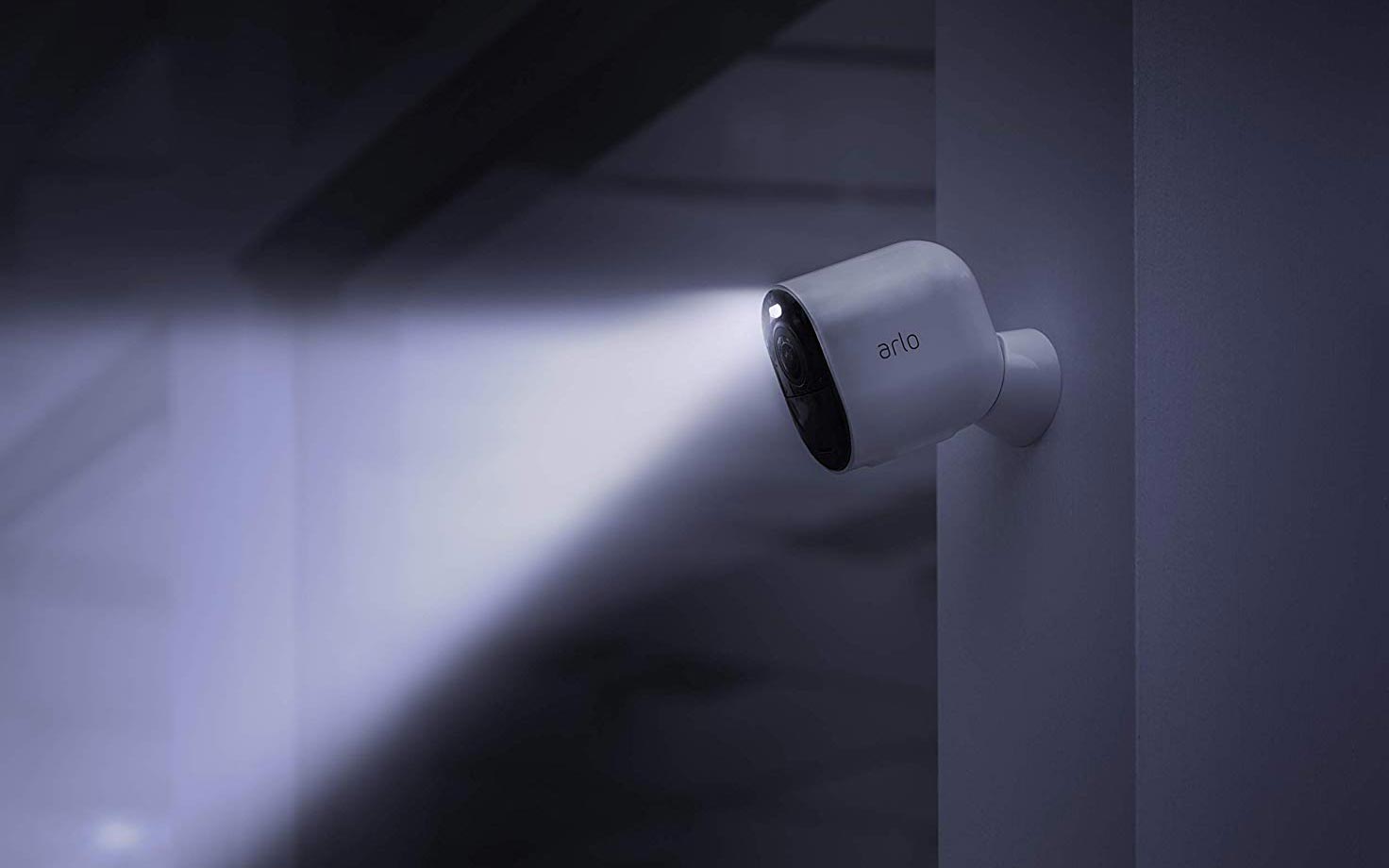
The indoor charging cable included in the box is a skimpy 3 feet long. Optional accessories available or soon to be released include an 8-foot indoor ($24.99) and a 25-foot outdoor magnetic charging cable ($49.99), an external dual-battery charging station ($49.99) and a solar panel for outdoor power ($79.99).
MORE: Arlo Q vs. Arlo vs. Arlo Pro vs. Arlo Pro 2 vs. Arlo Ultra
The required 5 x 6 x 1.5-inch white-and-black SmartHub is included in most Ultra packages, and can support as many cameras and-or other Arlo security devices (such as a smoke alarm) as your network's bandwidth can handle. This new version of the Arlo SmartHub will also be compatible with the new Arlo Security System devices. Ports on the back include Ethernet (a 77-inch cable is included), power and a slot for a microSD memory card slot (it supports speed class 10, UHS1, V10). The card is not included. The hub also has an 80 dB siren that you can set to be triggered by motion and/or sound, or manually activated remotely.
Arlo Ultra review: Video quality
The Ultra's video quality lives up to (and surpasses) the standard set by previous Arlo cameras. In addition, it has a number of new video settings, with varying levels of usefulness.
The Ultra's 4K video is of a higher resolution than the earlier Arlo cameras'. However, while you can stream live 4K video from up to two cameras simultaneously (if your network bandwidth allows it), there are a few caveats:
- The hub's microSD card can save 4K videos, but to view them, you need to remove the card from the hub and watch them on a computer or other device with a micro-SD card reader. (Arlo plans to implement remote viewing of the microSD card sometime this year, probably for an additional fee.)
- If you want to save 4K videos to the cloud, you will have to spend an additional $1.99/month on top of your subscription. Otherwise, the highest resolution video that you can store in the cloud is 1080p.
- If you have Track & Zoom turned on, even if you buy the 4K recording plan, the software will automatically switch to 1080p.
In my daylight tests, I was impressed with both the 4K and 1080p videos from the Ultra, which were both better than the video I had captured with the Arlo Pro 2. My Ultra's indoor daylight videos were well-exposed, with accurate color, and great details in both shadows and highlights.
My outdoor daylight tests were created under less-than-optimal conditions, on a series of very cloudy, rainy days. Still, the videos have good detail, accurate color and exposure.
The color night-vision videos weren't as excellent as those taken in daylight. Even so, the Ultra's 6500 K white spotlight was bright enough to illuminate subjects so that the camera could capture colors that looked great on my Samsung Galaxy S9's screen. However, on a large computer display, the 1080p video midtones were softer, and faces blurrier than on the smaller phone screen. As expected, the 4K videos were sharper and clearer than the lower-resolution videos.
The Ultra's two 850nm infrared LEDs produce grayscale night videos that are marginally better than the Pro 2's. When viewed on a phone, they have an acceptable dynamic range, so it's not difficult to identify a person's face. What’s more, the Ultra's infrared mode captures motion with less blur than the Pro 2. When viewed on a large, calibrated computer screen, the Ultra's face is soft, and contrast is reduced, though still better than the Pro 2.
What makes 4K recording particularly useful is when you want to zoom in on a small area of a video to view important details, like a car's license plate. In my daylight tests, I could easily read the numbers on a license, even though it was a tiny percentage of the video's full wide-angle field of view, and therefore slightly pixelated.
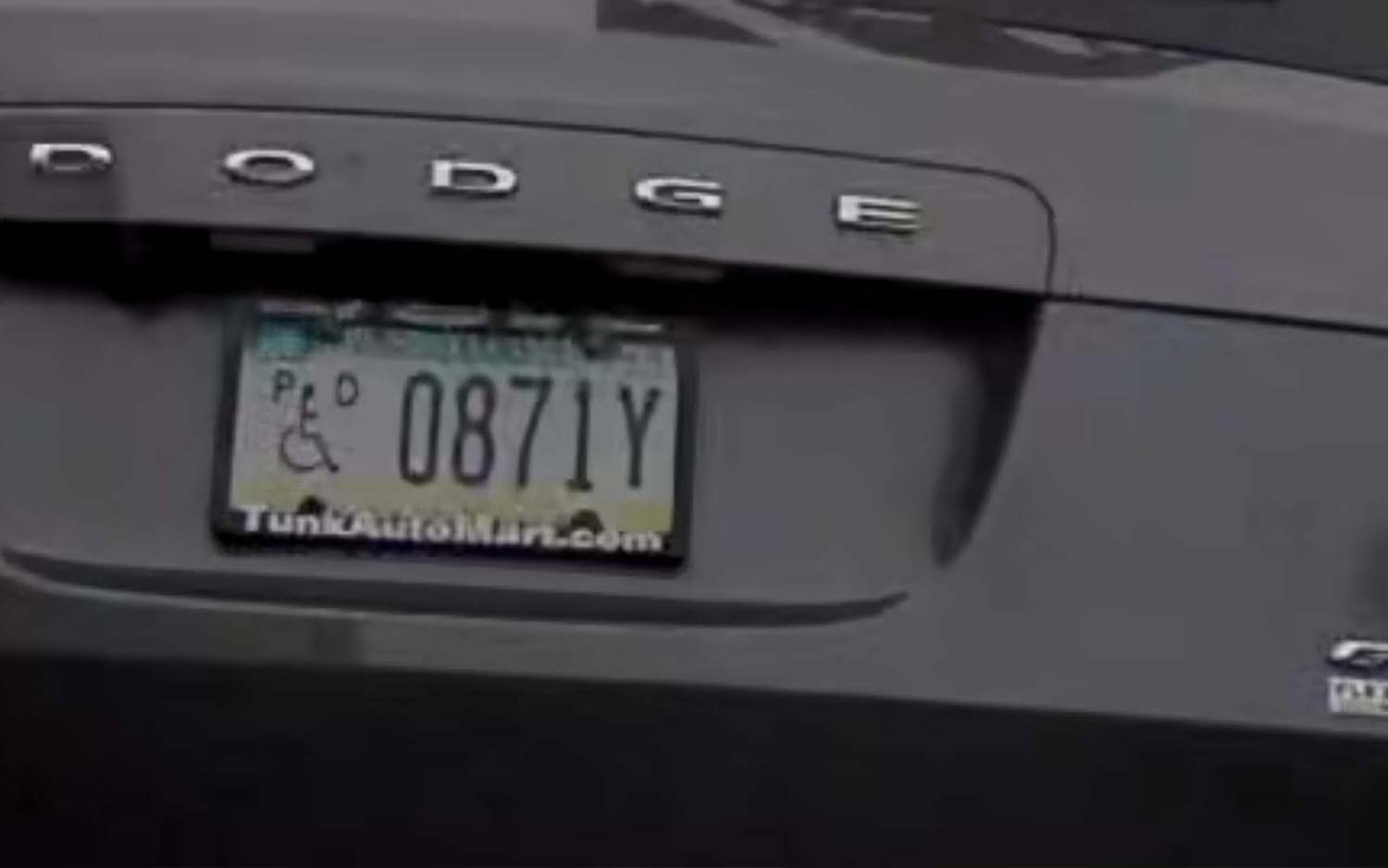
However, in my night videos (in both modes), the license plate appeared blown out and illegible in most cases.
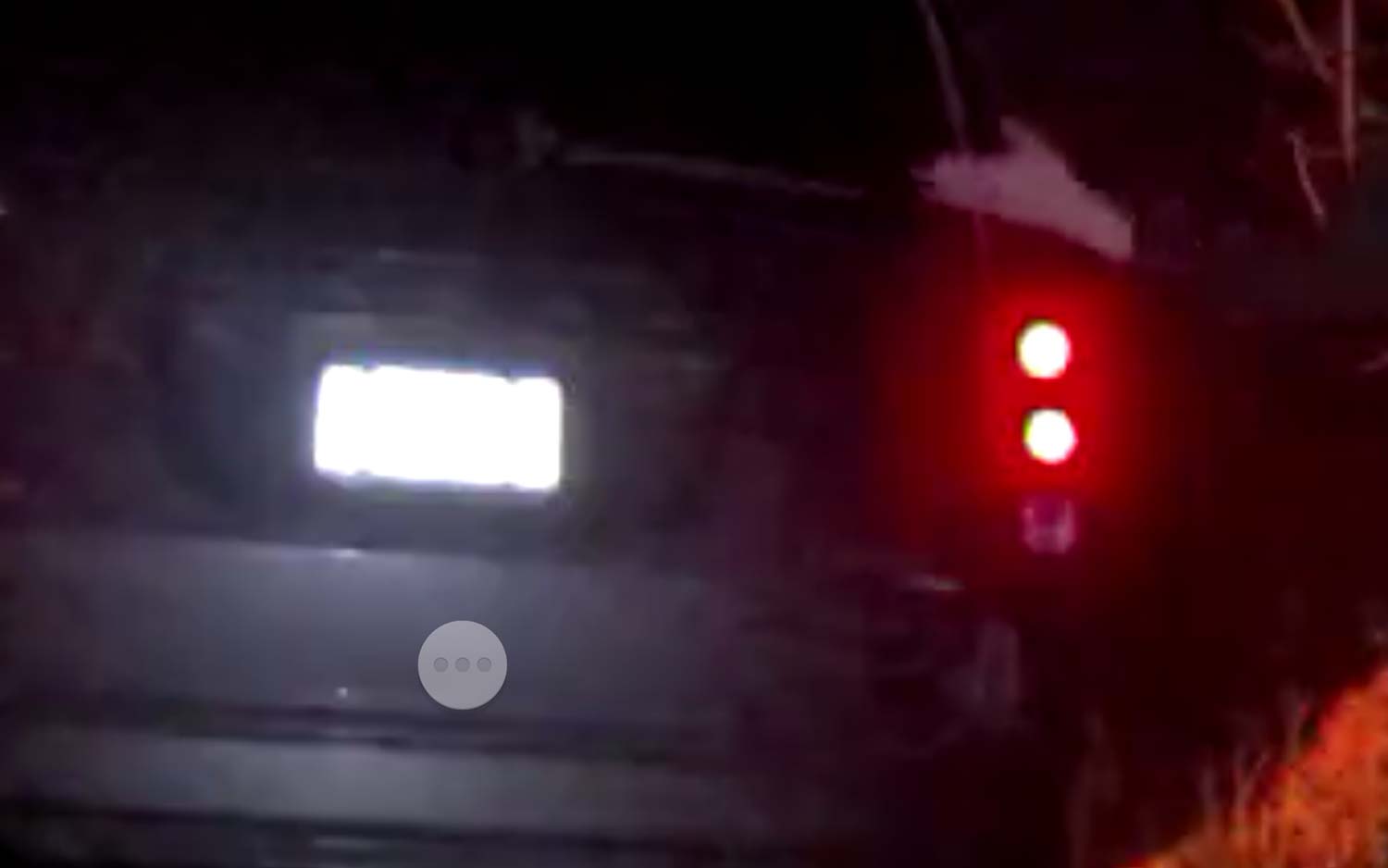
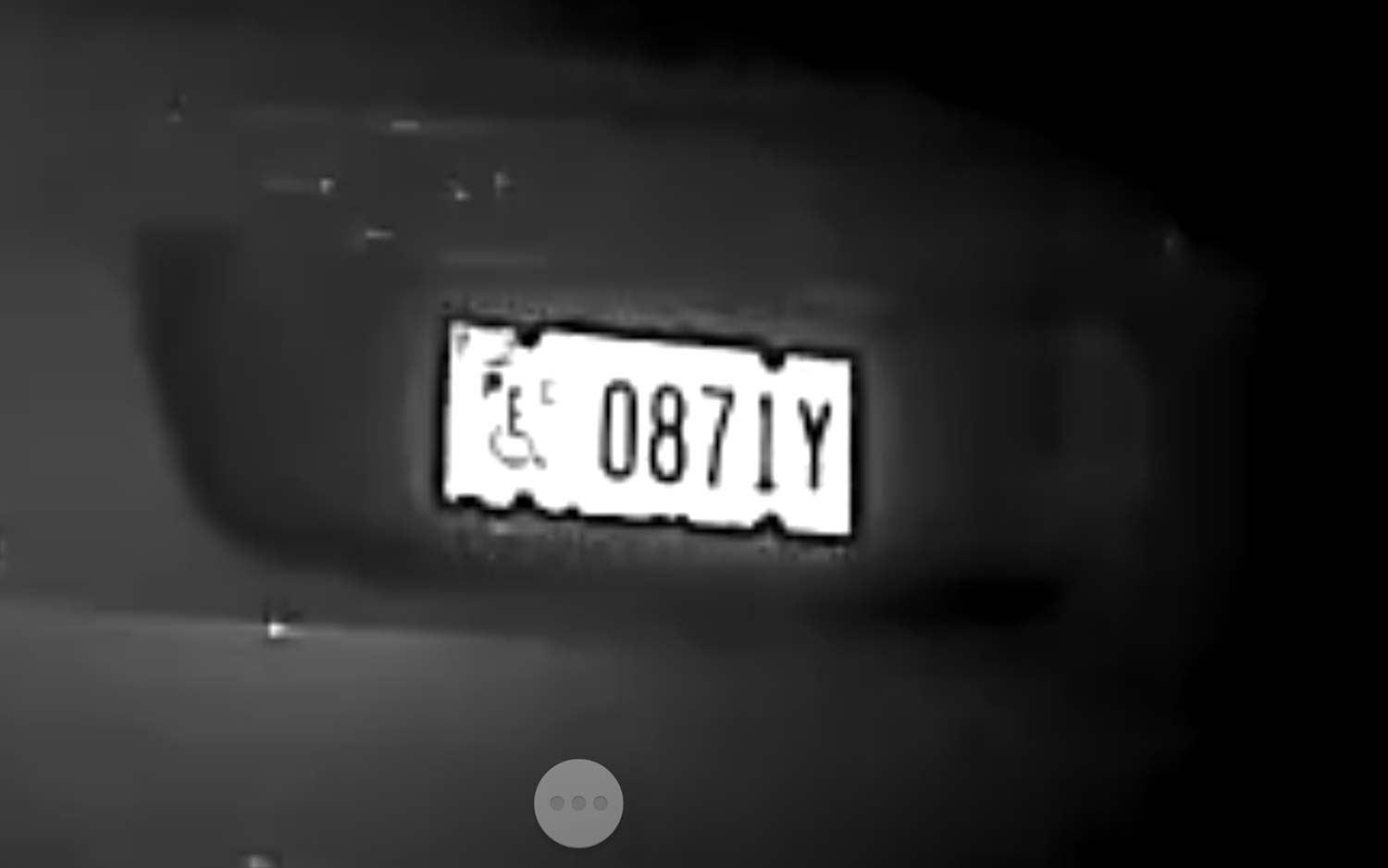
The only way I could consistently capture a clear license plate at night was to reduce the brightness control considerably, to the point where the rest of the video was too dark. Changing among the spotlight's various settings of Constant, Flash or Pulsate did not help the situation, nor did turning HDR on or off in either the infrared or spotlight modes.
Arlo Ultra review: Track and zoom
Ultra's new video mode, Track and Zoom, needs some work before it will be useful. Unlike the Wyze Cam Pan, which rotates 360 degrees to track a subject, the Arlo Ultra takes advantage of its larger resolution to digitally track and zoom in on a subject as it moves across its 180-degree field of view.
While the quality of my Track and Zoom videos were good to excellent, I was unimpressed by the feature. The Ultra's Tracking in my outdoor daylight videos followed me wherever I walked, but the camera lagged behind my movement in my other videos, and it focused on the wrong areas in portions of indoor videos. In all the videos, the zooming was minimal, and in many cases it did not provide significant additional data to help a viewer recognize a face.
Arlo Ultra review: Audio Quality
The Arlo Ultra's recorded audio is clear, audible and of a good volume, even when the person was more than 20 feet from the camera on a windy day.
The full duplex two-way audio is quite good. However, when speaking from a phone to the camera, it was much louder than when speaking from the camera to a phone. With the latter, I had to have the phone close to my ear to hear it, even when the phone's volume was cranked up to its highest setting.
Arlo Ultra review: Motion and sound detection
With Ultra, Arlo's excellent motion and sound detection has increased both in functionality and features. The modes — Armed, Disarmed, Schedule and Geofencing — still provide easy-to-use controls for how the Ultra's software will respond to specific situations.
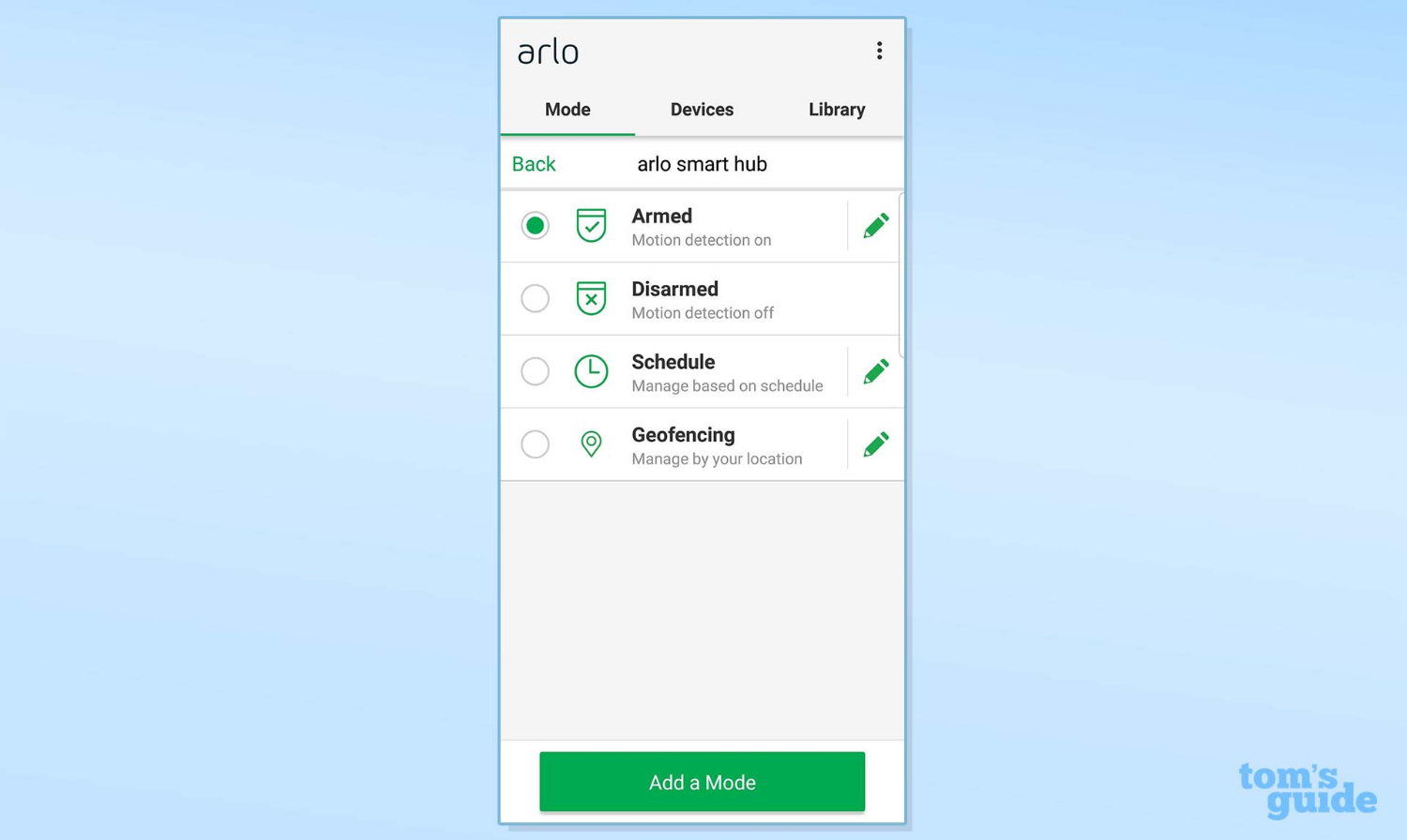
Scheduling when the camera will respond to motion or sound is flexible, so you can set several different time periods per day, and easily repeat them for specific days of the week.
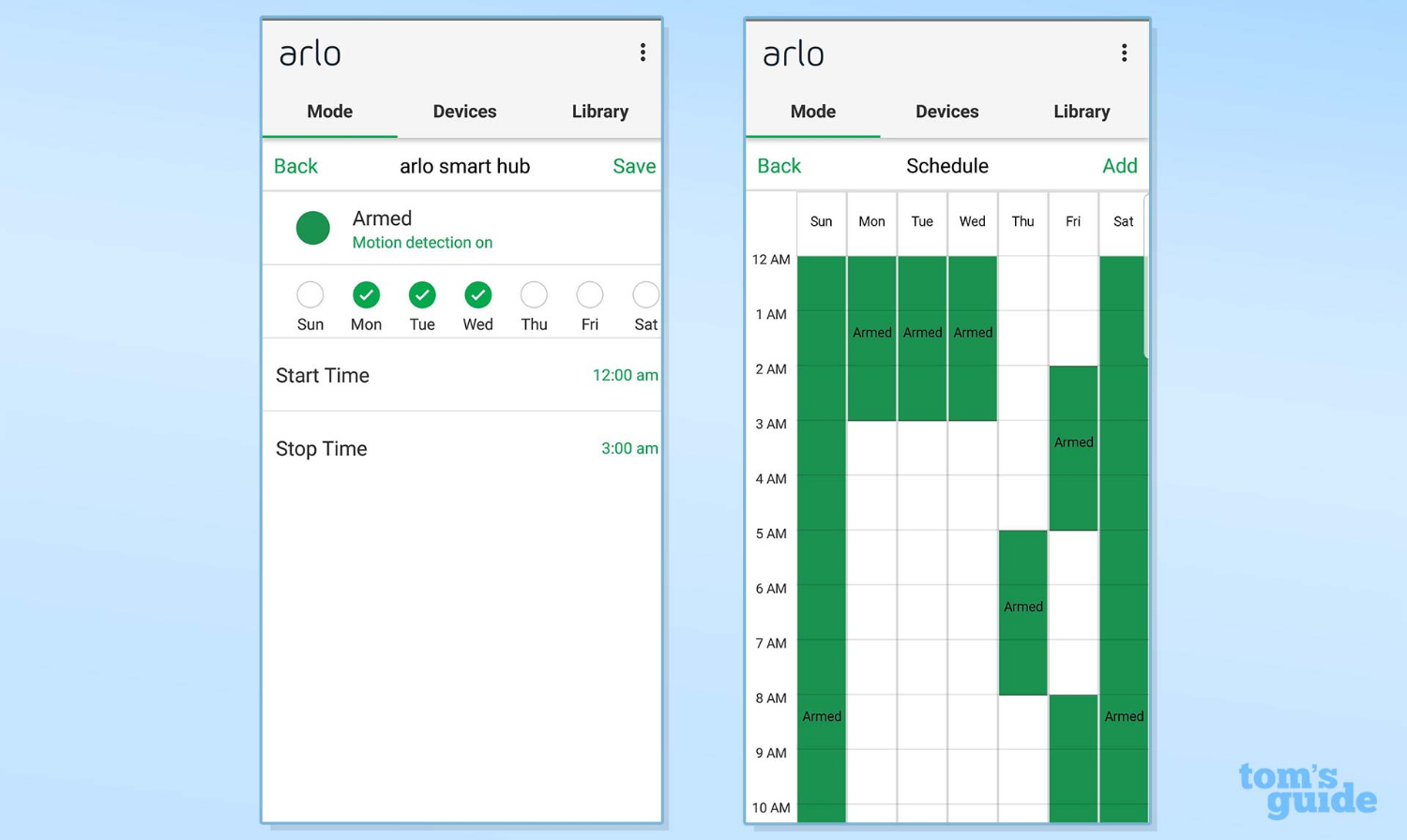
Editing the Armed mode or creating a custom mode is a simple step-by-step process, identical to previous Arlo cameras. If you create a custom mode, you can also have motion and-or sound trigger another connected device.
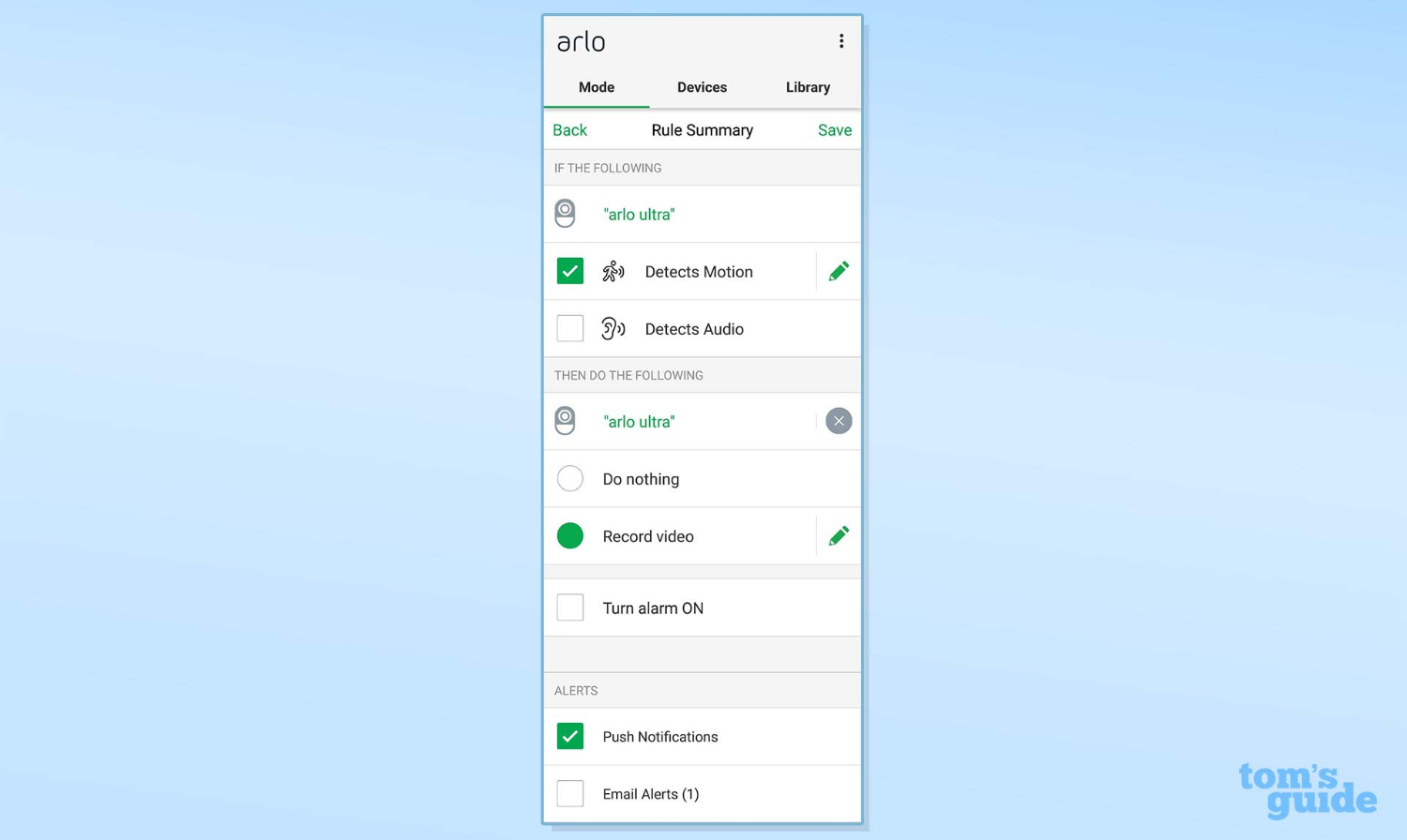
The Ultra's dual motion detectors are rather sensitive. I could set the sensitivity slider all the way to 10 (out of a maximum of 100), and the camera was still able to detect a moving person without giving false alerts for changes in light and other similar incidents. However, Arlo still doesn't have a button in the test screen to actually set the camera's motion sensitivity. I had to go to the video settings screen to adjust the slider there.
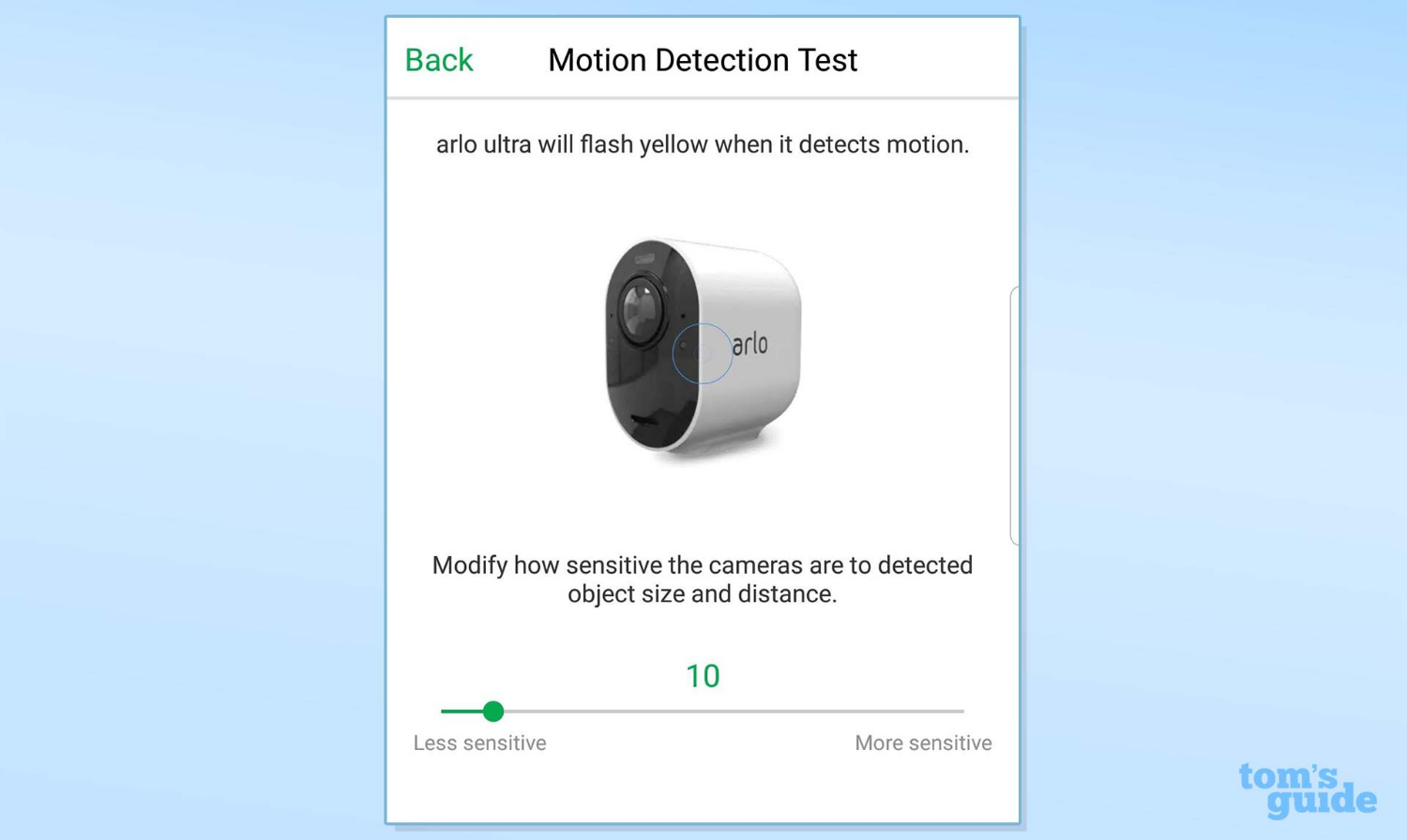
Motion-detection tools that are available only if you have a cloud plan.
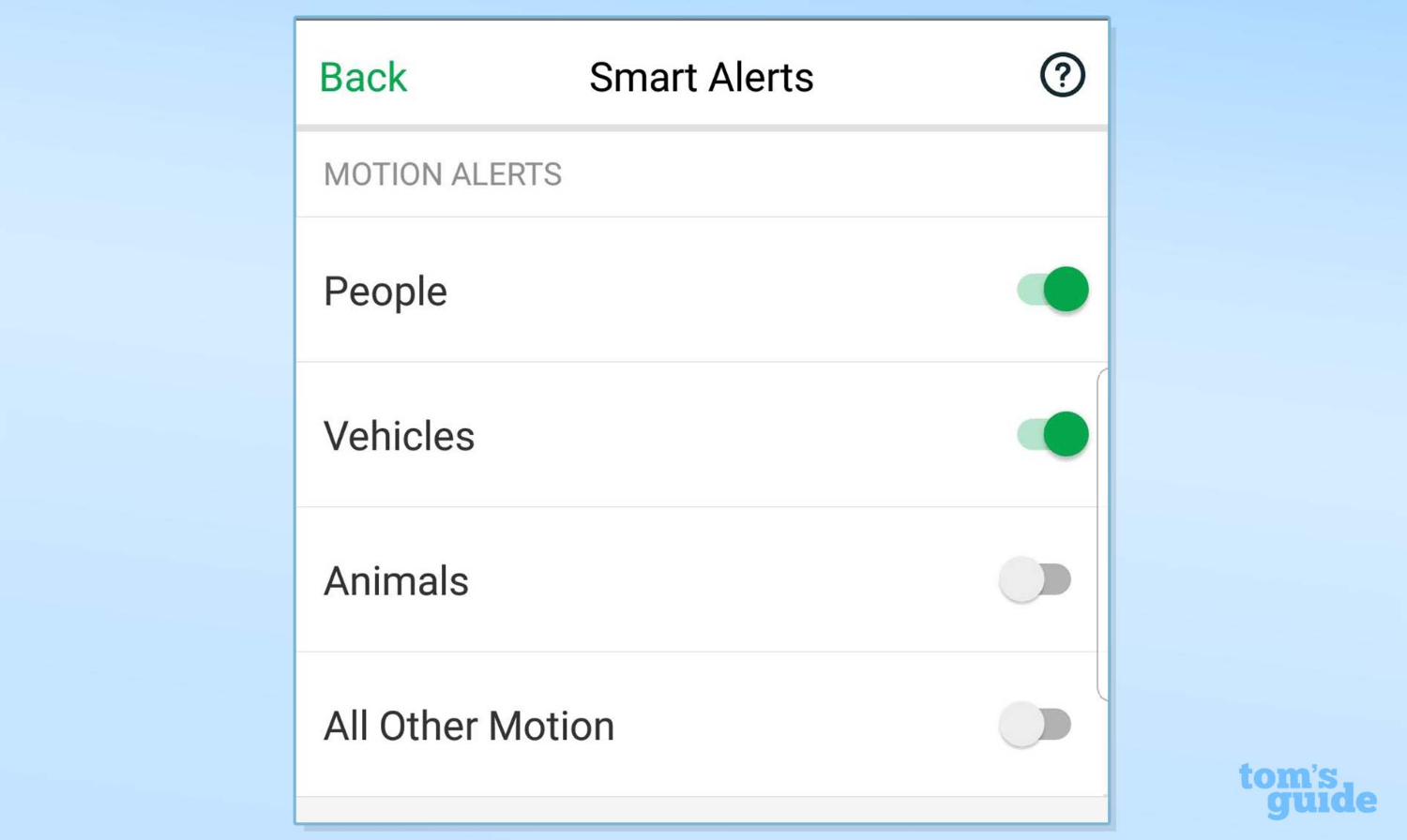
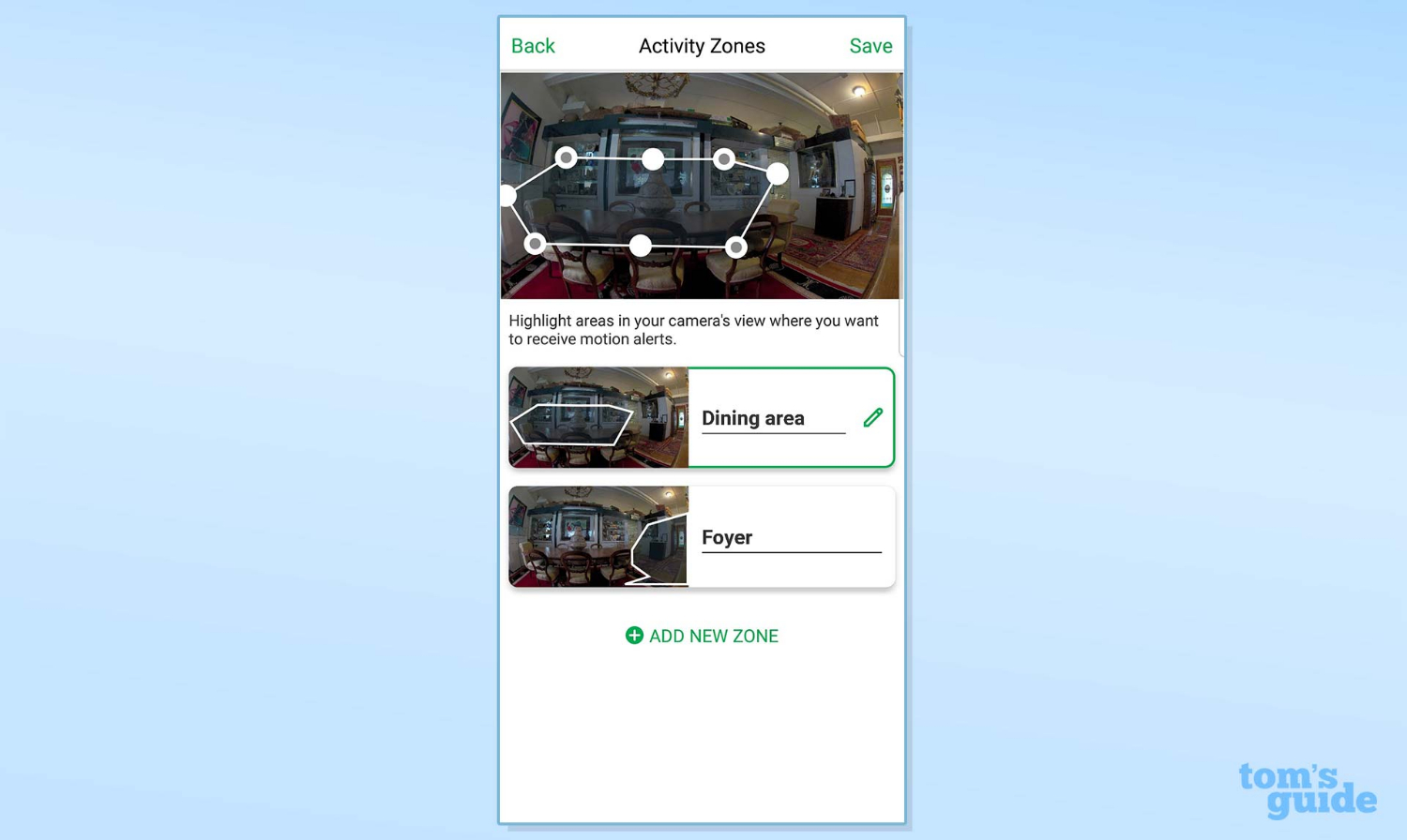
Arlo Ultra review: Cloud storage costs
Arlo's cloud plan strategy has changed with the Ultra. Unlike the other Arlo cameras, the Ultra doesn't include permanently free seven-day rolling cloud storage. Instead, the Ultra comes with one year of Arlo Smart Premier ($9.99/month), which includes 30-day rolling-cloud service at up to 1080p for up to 10 Arlo cameras (regardless of the model). The Premier plan also includes AI motion detection that distinguishes among people, packages, vehicles and pets, and the new e911 service, which alerts emergency services local to your camera.
That's a generous add-on, but when the free year ends, you'll have to sign up for one of the company's plans if you want cloud storage. The Arlo Smart plan provides the same level of service as Smart Premier, but is charged on a per-camera basis at $2.99/month/camera. The Arlo Smart Elite program provides rolling 60-day storage for up to 20 cameras for $14.99/month.
MORE: Arlo vs. Ring vs. Nest - Who has the best video storage plan?
If you want to save 4K video to the cloud, you can upgrade any of the plans to Premium Video Recording for $1.99/month per camera.
If you run the Ultra as a wired camera, you can also pay for continuous video recording (CVR), which is displayed on a convenient timeline. The price is $9.99 per month per camera for 14 days of recording, or $99.99 per year. For 30 days, it's $19.99 per month, or $199 per year.
All videos are also automatically saved locally to a microSD memory card in the hub (card not included), which means that a cloud plan isn't necessary. Sometime in 2019, Arlo plans to add the ability to remotely access clips saved on the card. Arlo's spokesperson declined to state whether remote access to the card would involve a fee.
Arlo Ultra review: Smart home compatibility
The Ultra supports Google Assistant, Amazon Alexa and IFTTT. Arlo has indicated that it plans to support Apple HomeKit soon.
Arlo Ultra review: Mobile apps & web portal
Arlo's software (both the mobile app and the web portal) has long been among my favorites for its depth of useful features, its clean, intelligent interface and its comparative ease of use. Although that still remains true, the web portal is now long in the tooth, for the simple reason that it still requires Adobe Flash, which has been proven to be a security risk. Although the mobile app gives you full control over the camera, you'll still need to use the web portal to manage your account and cloud plan.
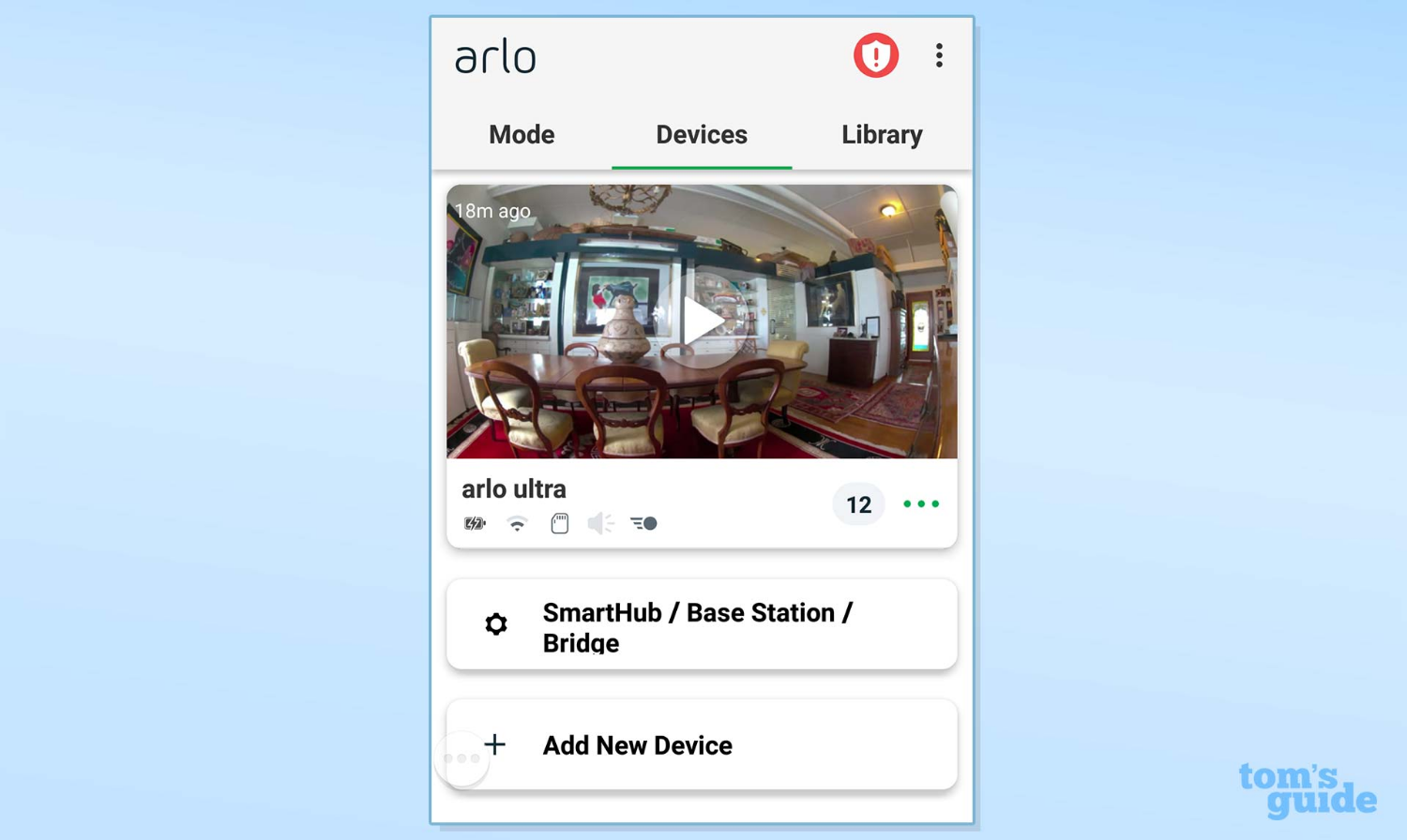
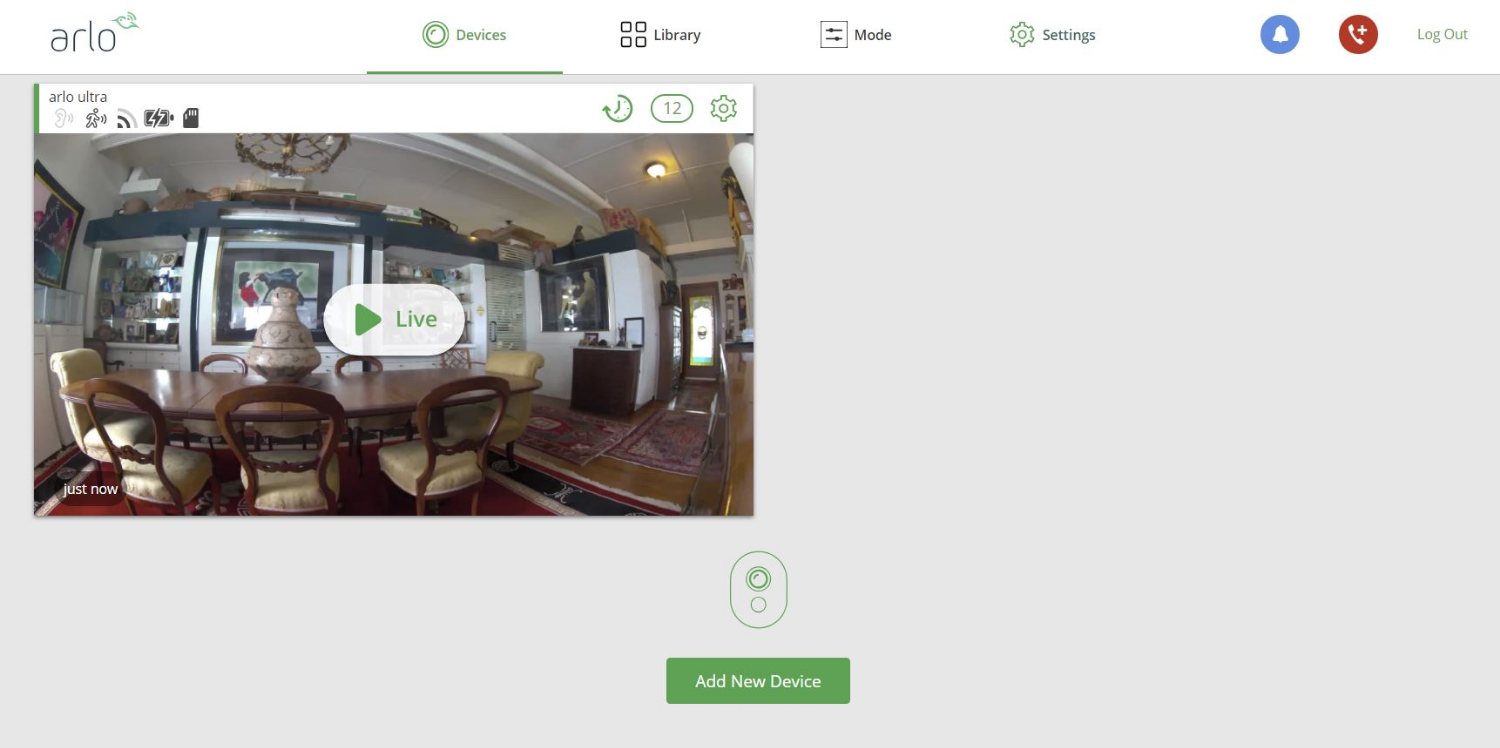
One other difference between the mobile app and the web portal relates to the useful options for getting quick help if there's an intrusion. When you view the home page or livestream on the web portal, you have an immediately accessible button to activate the new e911 system, which will call the emergency services local to the camera, rather than services local to you (and your phone).
The mobile app takes that concept a bit further. In addition to a button for activating e911 on the home screen or live view, you can sound the siren on the hub or call a friend (or family member) to investigate. The Arlo app also now has the option of using a fingerprint login.
One of my pet peeves about the Arlo software still hasn’t been addressed. You can't have more than one interface active at a time. If you are checking out a camera or editing a setting on your phone or computer, and a family member logs in from another device, you will be logged out.
Arlo Ultra review: Bottom Line
The Arlo Ultra isn't cheap. A single camera plus the required hub and one year of free Smart Premier cloud plan is $399.99. An add-on camera costs $299.99. Other packages include multiple camera systems, with the hub and Smart Premier cloud plan, such as four cameras for $999.99, or two cameras for $599.99. For a more affordable option, check out our Arlo Pro 3 review and our Eufycam 2 review; both those cameras offer similar features, but have lower 1080p cameras.
The Ultra delivers top-quality video, and its powerful-but-simple software makes it quick and easy to call for help. If you want the best home security camera — and are willing to pay for it — the Arlo Ultra is the wireless camera to get.
Arlo Ultra specs at a glance
| Video Resolution: | Up to 4K |
| Field of View: | 180 degrees |
| Night Vision: | 2 white LEDs for color night videos, plus 2 IR LEDs for more traditional grayscale night videos |
| Network Connectivity: | 802.11 b/g/n/ac, Bluetooth Low Energy 4.2 |
| Smart Home Connectivity: | Google Assistant, Amazon Alexa, IFTTT |
| Audio: | Full duplex 2-way audio |
| Mobile Devices Supported: | To take advantage of the 4K resolution, iOS version 9.0 or higher, or Android 5.0 or higher |
| Web Browsers Supported: | Internet Explorer 10 or above, Firefox 3.5 or above, Safari 3 or above, Google Chrome (any version) |
| Cloud Storage & Monitoring: | Free year of Arlo Smart Premier cloud service, which includes 30-day rolling cloud service at up to 1080p for up to 10 Arlo cameras (regardless of the model). After that, the same plan costs $9.99/month. Or, you can get the same level of service on the per-camera basis at $2.99/month/camera. For rolling 60-day storage for up to 20 cameras, you will pay $14.99/month. |
| Local Storage: | Slot in the hub for a microSD card (speed class 10, UHS1, V10). Card not included. |
| Security: | 128-bit SSL, AES-128, TSL, 2 factor authentication |
| MSRP: | $399.99 (for one camera with hub, including one year of Smart Premier cloud storage plan) |
Credit: Tom's Guide
Sally Wiener Grotta is the president and lead analyst of DigitalBenchmarks test lab (www.DigitalBenchmarks.com). The scripts she created for various tech publications for testing and evaluating digital cameras, image quality, software and related technologies have become industry standards. Among her numerous books is the first major volume on image processing “Digital Imaging for Visual Artists” (McGraw-Hill), co-authored with Daniel Grotta. Her hundreds of reviews, stories and columns have appeared in scores of magazines, journals and online publications.
